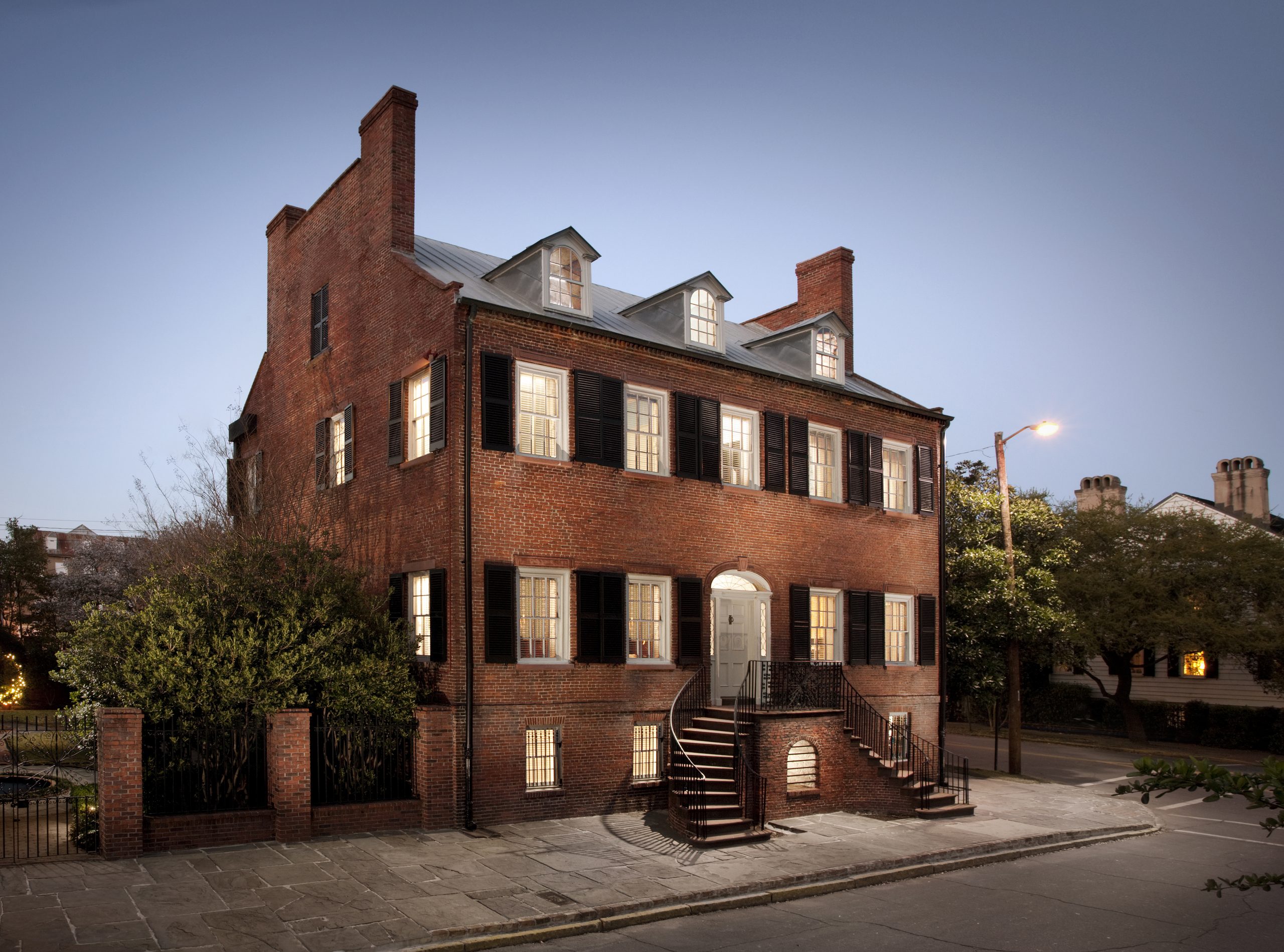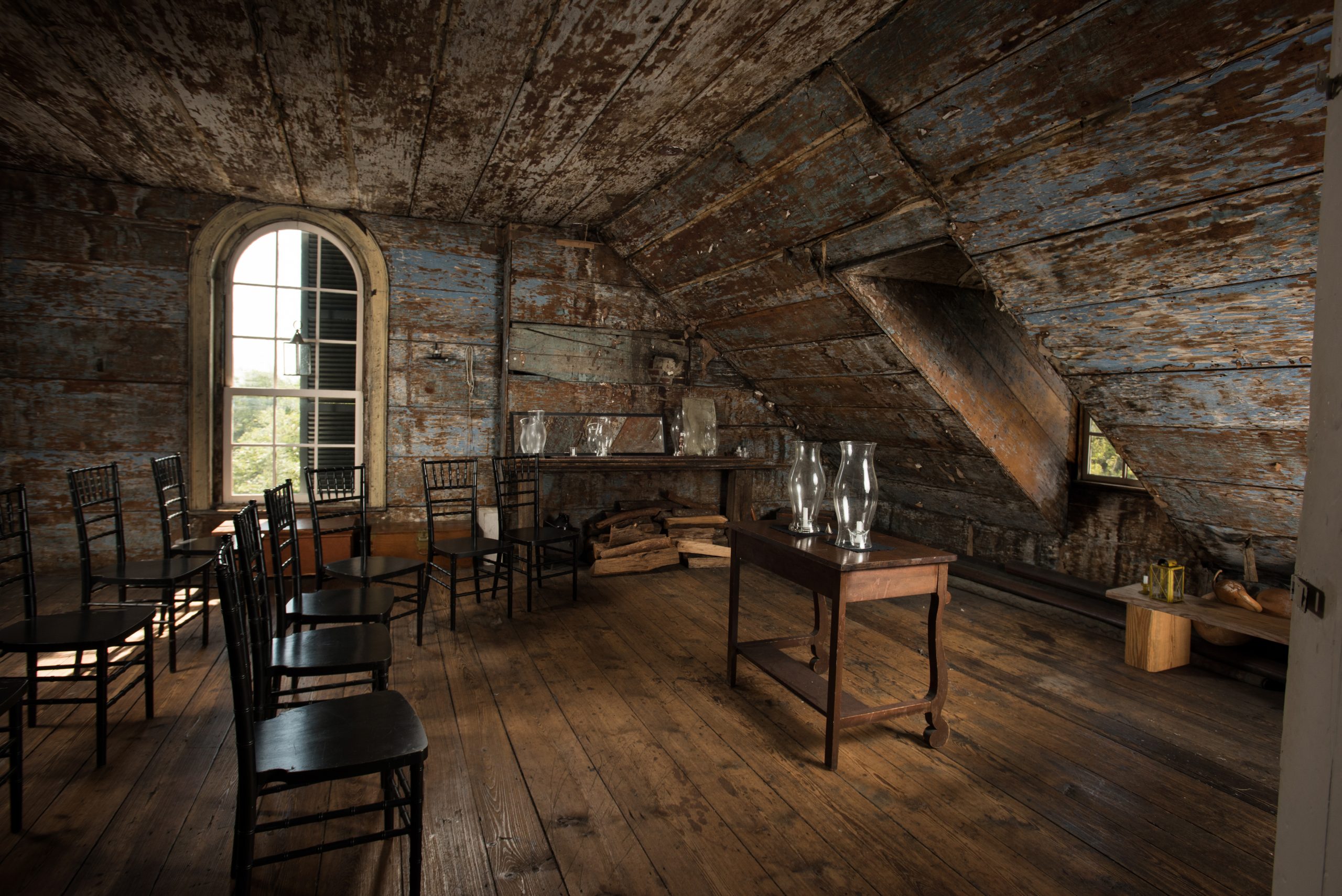![IMG_7336[2]](https://www.myhsf.org/wp-content/uploads/2020/11/IMG_73362.jpg)
The Davenport House attic has a remarkable expanse of old paint in a shade of blue that makes the space evocative. The space, we call the garret room, has been left unrestored. For the guests, who have the opportunity to see it, it is a highlight of their visit. People feel closer to the past when they can see for themselves the layers of history and in that space there are literally layers to see – from the original wood surfaces that surely Davenport’s slaves Ned and Isaiah shaped, to fragments of wallpaper and its muslin backing to paint – all together in close proximity. The space is not a pristine period room. It is raw. And, the star of the show is the blue paint. It resembles the blue paint used throughout the Low Country on porches, window frames and doorways.
This color is referred to as “haint blue,” and it resembles other large expanses of a similar shade at historic houses. The shade and the term “haint blue” have become mythic and ubiquitous. The Gullah Geechee legend says that evil spirits do not like water and painting spaces to look like water will keep them away. The color is said to have been originally based on the indigo grown in the region in the eighteenth century. Today, it is so popular that Sherwin Williams offers a pale blue paint called haint blue that adorns porch ceilings throughout the LowCountry. [There is also a belief that it repels insects . . . ]
The color has deep meaning to the descendants of the enslaved. A short article by Shoshi Parks, What the Color ‘Haint Blue’ Means to the Descendants of Enslaved Africans, gives further details. Parks writes, “In the Low Country, the unique shade is both a protective talisman and a source of unspeakable suffering.” She continues, “Yet not all Gullah Geechee identify with the color’s use. Oral histories recorded as late as the 1930s and ’40s mention haint blue, but a lot was lost when the community became less isolated and more spread out during the mid-20th century.”
‘Haint blue was never mentioned in my family on Hilton Head Island,’ says Louise Miller Cohen, founder of the island’s Gullah Museum. ‘People are saying that we paint our houses blue to ward off the evil spirits. If that was true, all the houses on the island would be painted blue.’ Nevertheless, the museum—once the home where her father lived—is painted blue.”
The link between the DH attic’s blue paint, the Gullah Geechee culture of the area, and the enslaved workers who lived in the Davenport household has been a belief that we have cultivated. We wanted it to be true, but it is not, at least not the way we had yearned. Historical knowledge often takes us to places different than we anticipated. On examining the blue paint in the attic in February, architectural conservator George Fore found that the blue is the last layer of paint on the wood surface not the first and that it probably dates from the 1890s or later. So it is not a vestige of enslaved autonomy (painting their living spaces within a master’s household). Fore said the type of paint in the DH attic was available for purchase and was not homemade from indigo and buttermilk. [Though he has not yet submitted his final report, he mentioned the first layer of paint is a rose color.]
We have had at least two other disproven assumptions in the Museum’s recent past. One example was the masonry/ashlar wallpaper that used to be in the Entrance Hall and was universally hated. The DH documented the print by a fragment featuring a masonry pattern found in the Major John Berrien House. It turned out that fragment – the first visible layer on entering the once dilapidated house – was the youngest of the papers instead of the oldest. When we had the opportunity to remove our ashlar paper (because of a preservation issue), we replaced it with a paper we could better document from the 1820s Savannah. Similarly, a doll found in the rafters of the DH years ago and sold away, was returned in 2014. We had hoped to connect it with the household’s enslaved people. We dreamed that it was “Polly’s doll.” What we found on examination of the doll was its eyes are made of shoe buttons not available in the first half of the 19th century.
All of this is not to say the blue paint in the attic is uninteresting, or that it was not used as part of some sort of belief system. It was just not used in the 1820s by any of the people whose lives we currently concentrate on. While the DH interpretation does not concentrate on the tenant era, who’s to say it will not in the future? And the story of the why’s and wherefore’s of those residents should be known. It would add to the body of knowledge we have about the site for these stories to be known too. As for now, we know the blue paint was put in place in the late 19th century and only resembles what is referred to as “haint blue.”

